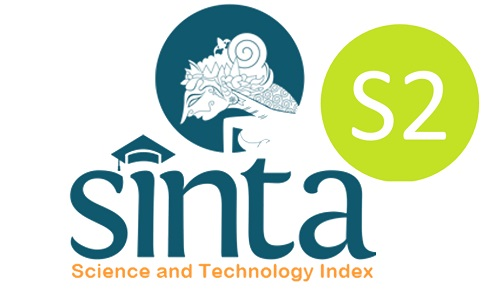THE INFLUENCE OF LANGUAGE USE AND LANGUAGE ATTITUDE ON THE MAINTENANCE OF COMMUNITY LANGUAGES SPOKEN BY MIGRANT STUDENTS
DOI:
https://doi.org/10.22373/ej.v1i2.190Keywords:
Language use, language attitude, community language, language maintenance migrant studentsAbstract
The maintenance of community languages of migrant students is heavily determined by language use and language attitudes. The superiority of a dominant language over a community language contributes to attitudes of migrant students toward their native languages. When they perceive their native languages as unimportant language, they will reduce the frequency of using that language even though at home domain. Solutions provided for a problem of maintaining community languages should be related to language use and attitudes of community languages, which are developed mostly in two important domains, school and family. Hence, the valorization of community language should be promoted not only in family but also school domains. Several programs such as community language school and community language program can be used for migrant students to practice and use their native languages. Since educational resources such as class session, teachers and government support are limited; family plays significant roles to stimulate positive attitudes toward community language and also to develop the use of native languages.Downloads
References
Cardona, B., Noble, G., & Biase, B. D. (2008). Community languages matter: Challenges and opportunities facing the community languages program in New South Wales. Penrith South: The University of Western Sydney.
Choi, J. K. (2003). Language attitudes and the future bilingualism: the case of Paraguay. International Journal of Bilingual Education and Bilingualism, 6(2), 81-94.
Clyne, M., Hunt, C. R., & Isaakidis, T. (2004). Learning a community language as a third language. International Journal of Multilingualism, 1(1), 33-52.
Hamers, J. F., & Blanc, M. H. A. (2005). Bilinguality and Bilingualism. Cambridge: Cambridge university press.
Krauss, M. (1992). The world's languages in crisis. Language, 68(1), 6-10.
Lao, C. (2004). Parents' attitudes toward Chinese-English Bilingual education and Chinese-language use. Bilingual Research Journal: the Journal of the National Association for Bilingual Education, 28(1), 99-121.
Lawson, S. (2004). Identity, language use, and attitudes some Sylheti-Bangladeshi data from London, UK. Journal of Language and Social Psychology, 23(1), 49-69.
Li, W. (2006). Complementary schools, past, present and future. Language Education, 20(1), 76-83.
Mackey, W. F. (1991). Language diversity, language policy and sovereign state. History of European Ideas, 13(1), 51-61.
Moseley, C., & Asher, R. E. (1994). Atlas of the World's Languages. London: Routledge.
Pauwels, A. (2005). Maintaining the community language in Australia: Challenges and Roles for Families. International Journal of Bilingual Education and Bilingualism, 8(2), 124-131.
Riagain, P. O. (2008). Language attitudes and minority languages. In J. Cenoz & N. H. Hornberger (Eds.), Encyclopaedia of Language and Education (Vol. 6, pp. 329-341): Springer science+Business media LLC.
Taumoefolau, M., Starks, D., Davis, K., & Bell, A. (2002). Linguists and Language Maintenance: Pasifika Languages in Manukau, New Zealand. Oceanic Linguistics, 41(1), 15-27.
Tse, L. (2000). The Effects of Ethnic Identity Formation on Bilingual Maintenance and Development: an Analysis of Asian American Narratives. International Journal of Bilingual Education and Bilingualism, 3(3), 185-200.
Wurm, S. A. (1996). Atlas of the World's Languages in danger in Disappearing. Paris: UNESCO Publishing.
Downloads
Published
Issue
Section
License
Proposed Policy for Journals That Offer Open Access
Authors who publish with Englisia journal agree to the following terms:
- Authors retain copyright and grant the journal right of first publication with the work simultaneously licensed under a Creative Commons Attribution License that allows others to share the work with an acknowledgement of the work's authorship and initial publication in this journal.
- Authors are able to enter into separate, additional contractual arrangements for the non-exclusive distribution of the journal's published version of the work (e.g., post it to an institutional repository or publish it in a book), with an acknowledgement of its initial publication in this journal.
- Authors are permitted and encouraged to post their work online (e.g., in institutional repositories or on their website) prior to and during the submission process, as it can lead to productive exchanges, as well as earlier and greater citation of published work (See The Effect of Open Access).









